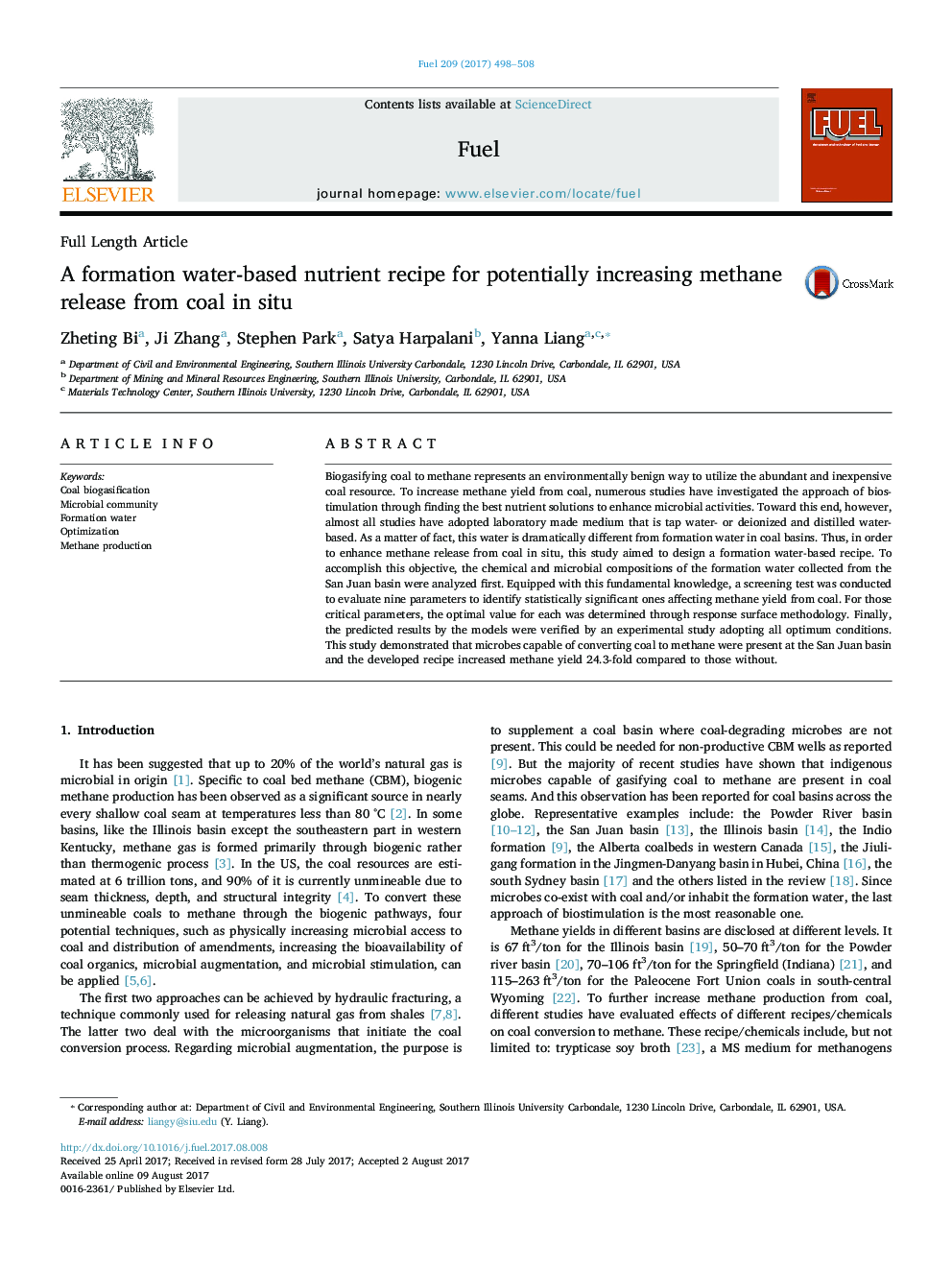| Article ID | Journal | Published Year | Pages | File Type |
|---|---|---|---|---|
| 6473950 | Fuel | 2017 | 11 Pages |
â¢Chemical and microbial compositions of the formation water were characterized.â¢A formation water - based recipe was developed through software-aided design.â¢With the recipe, methane yield was 24.3-fold higher than those without.â¢A methane yield of 1042 ft3/ton can be achieved by adopting the nutrient recipe.
Biogasifying coal to methane represents an environmentally benign way to utilize the abundant and inexpensive coal resource. To increase methane yield from coal, numerous studies have investigated the approach of biostimulation through finding the best nutrient solutions to enhance microbial activities. Toward this end, however, almost all studies have adopted laboratory made medium that is tap water- or deionized and distilled water- based. As a matter of fact, this water is dramatically different from formation water in coal basins. Thus, in order to enhance methane release from coal in situ, this study aimed to design a formation water-based recipe. To accomplish this objective, the chemical and microbial compositions of the formation water collected from the San Juan basin were analyzed first. Equipped with this fundamental knowledge, a screening test was conducted to evaluate nine parameters to identify statistically significant ones affecting methane yield from coal. For those critical parameters, the optimal value for each was determined through response surface methodology. Finally, the predicted results by the models were verified by an experimental study adopting all optimum conditions. This study demonstrated that microbes capable of converting coal to methane were present at the San Juan basin and the developed recipe increased methane yield 24.3-fold compared to those without.
